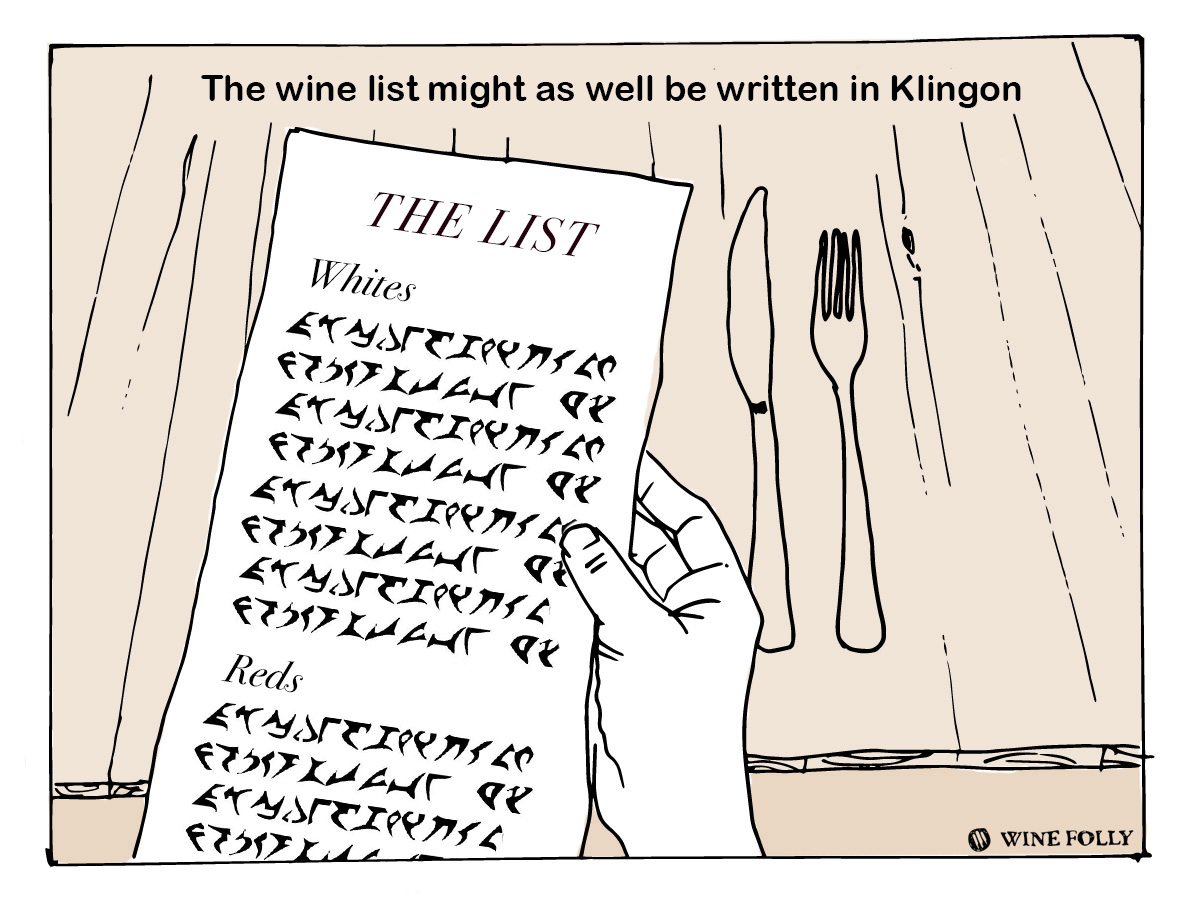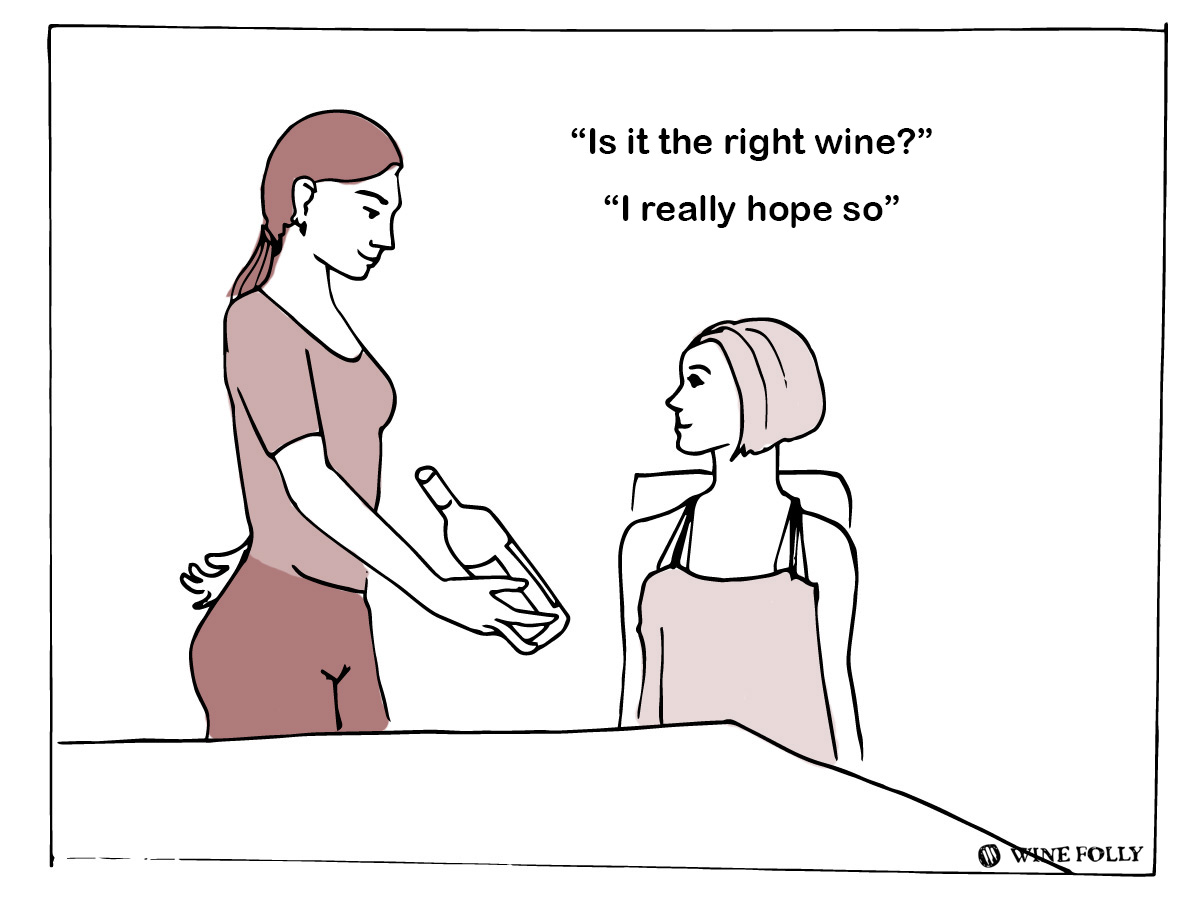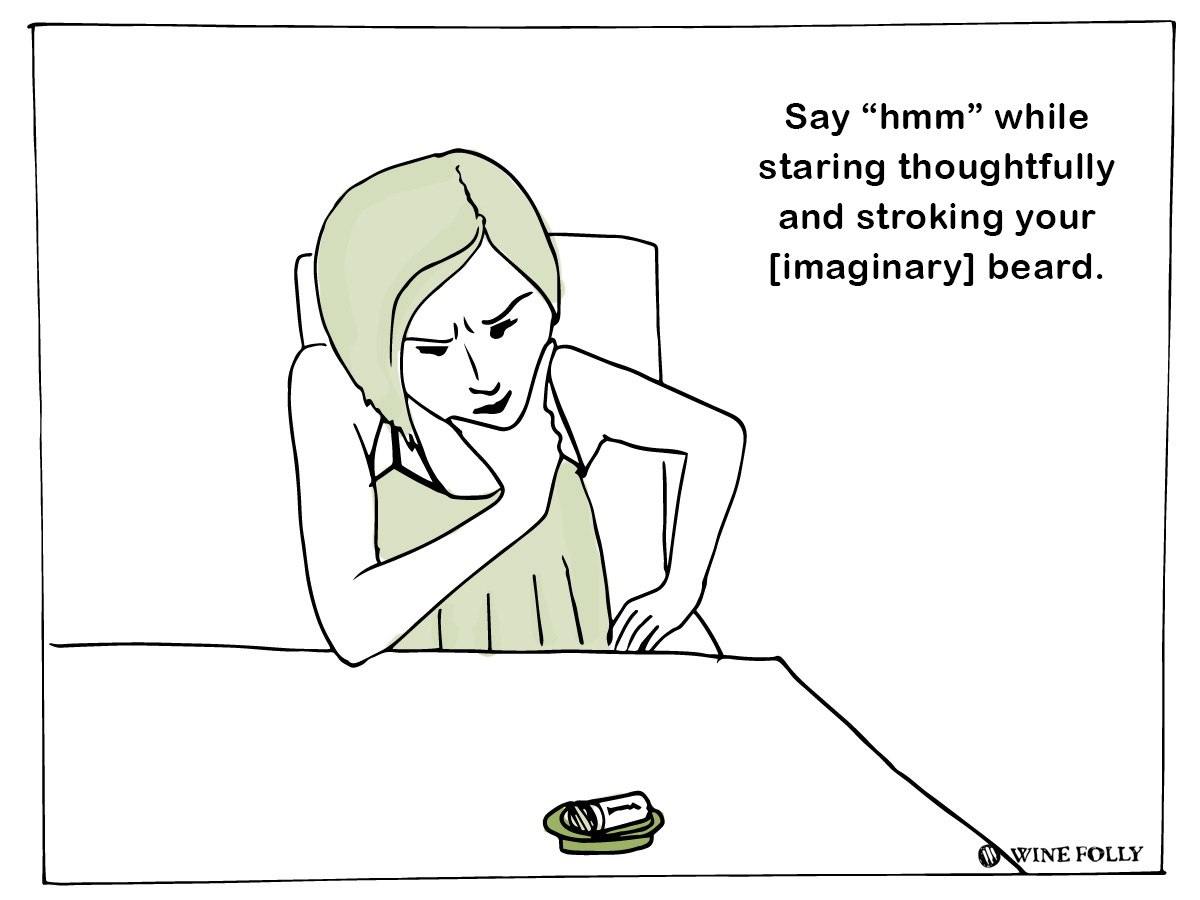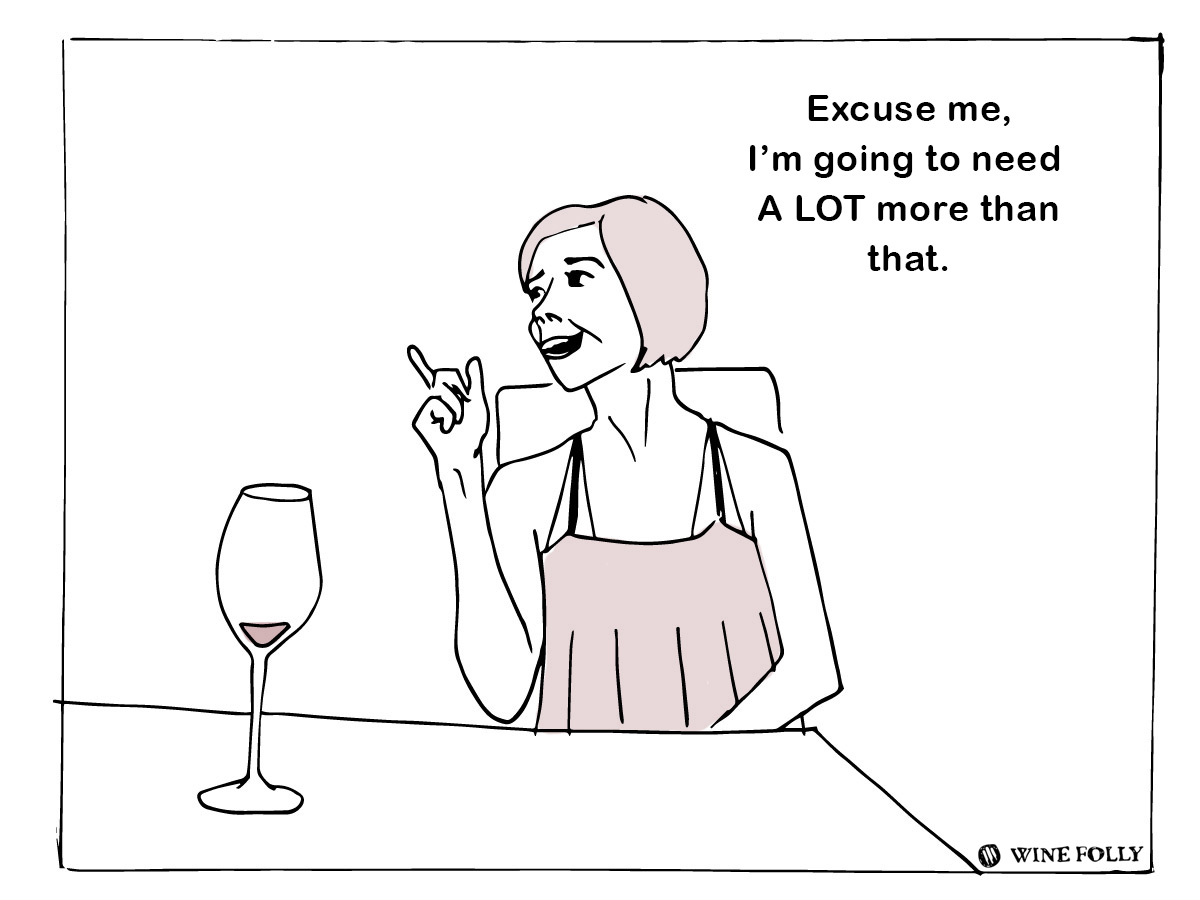There are some vestigial practices in wine. For example, the one we all know (and some of us dread) is the practice of ordering wine in a restaurant. It goes something like this:
- pick out a wine
- order it
- taste-test it in front of the server/sommelier (and all the other guests at the table)
- manage to do all of this and not look like an idiot
If you’re a glass half-full kind of person (or an extrovert), you see the wine presentation as a pleasant tradition imbued with cultural edifice (read: ooo, fun!). On the other hand, if you’re a glass half-empty person (or even just an introvert) you see the whole process as a needless, stressful affair (read: NOPE).
Awkward Moments: Ordering Wine in a Restaurant
Ordering wine in a restaurant is viewed by most of us as an ostentatious affair that is more likely to cause embarrassment than happiness. Odd as it may seem, the roots of the wine ordering process were originally intended to help you get what you want. Here’s a funny look at what it’s like to order wine in a restaurant and what the purpose is of each step of the process.
The server hands you a wine list…

The wine list might as well be written in Klingon
In a perfect world, you had all the time you needed to become a cultured wine-drinker. And, if that were true, reading the words “Cserszegi Fűszeres” would make your mouth water for a delicate Hungarian white wine that smells subtly of roses, and asking for an “Agiorgtiko” would make you excited to exercise your well-practiced Greek accent. (btw, if you have already done both of these, you may now retire, you’ve reached the echelon of wine geekery) For the rest of us mere mortals, we must slide on the surface and pretend we know what’s going on.
On selecting the right wine…

Why don’t we mind meld to instantly understand what I want
If you are confident in explaining what you want, you don’t need to read a single word. The only thing you’ll want to look at is the numbers. How much did you want to spend tonight? Got a figure in your head? Good.
Then, simply imagine what you like to drink:
- Is it red or white? Dry or sweet?
- Is it light and refreshing or full and rich?
- Bowl of fruit, bouquet of flowers, or basket of herbs?
- Is it going to be paired with your food or are you going to drink it on its own?
Once you have imagined the right wine in your head, tell the sommelier or server your 4 aforementioned pointers. They’ll get to work trying to impress you and the best part is, if you hate what they picked out for you, it’s not your fault.
The somm brings the bottle you just ordered…

“Is this the right wine?” “I really hope so.”
Presenting the Bottle
The bottle presentation seems a little over the top, but let me tell you, it comes from a really good place. In the olden days when people would drink a lot of Burgundy at fancy restaurants, they might say something like “I’ll take the Montrachet” (“Mon-tresh-aye” and it’s a Chardonnay). Well, if you’re on a budget, you probably meant the Puligny-Montrachet (maybe around $50 a bottle) and not the Montrachet (a Grand Cru valued anywhere from $200–$1500 a bottle). So, looking at the bottle is a simple verification system to make sure the server didn’t grab the wrong bottle.
Since mixups happen all the time, it’s still a useful step of the process. Here’s what you should pay attention to:
- Check that it’s the correct winery name
- Check that it’s the variety (or blend) that you requested (since wineries make several bottlings)
- Check that it’s the vintage that was listed
There are, of course, some rare cases where you’ll want to check the condition of the bottle prior to opening when buying old wine in a restaurant, but if you’re ordering this kind of wine, then you probably know what you’re doing. If not, throw me an email and I’ll get you in touch with the right people.
The cork presentation (totally fluff)

Say “hmm” while staring thoughtfully and stroking your [imaginary] beard.
Today, the presentation of the cork is completely for show. Originally, however, it was likely another courtesy to prove that the bottle hadn’t been refilled and recorked or no other funny business had occurred. Since many of today’s great wines don’t even use corks (go screwcap!), it’s become more of a gesture, with many restaurants removing this extraneous step altogether.
Here are some things you can do while this is happening:
- Resist picking up the cork and putting it in your nose
- Imagine what it might be like to be in a cork forest in Portugal
- Make a note to call your mom before it’s too late
Taste-testing the wine…

Excuse me, I’m going to need A LOT more than that.
Approving the Wine
The sommelier/server will pour you a small taste with which your job is to do 2 simple things:
- Smell the wine to make sure it’s not corked. Here’s a short article on how to sniff out corked wine.
- Taste the wine to make sure that there are no other wine faults. Read about other wine faults here.
But what if I hate it?
Taste-testing the wine also happens to be the same moment when you realize you either like or dislike the wine. And, even though your feelings are supposed to be unrelated to the wine approval process, it’s hard not to let them come out. What do you do if you hate the wine? Well, the way I see it is, if you’re spending under $100 on a bottle of wine, it’s more-or-less reasonable to let them know and go about finding an alternative. If the wine is over $100 and you picked it out… well, maybe the smart thing to do would be to ask for some orange juice on the side and get ready to drink the most expensive Sangria of your life. As they say: you only live once…